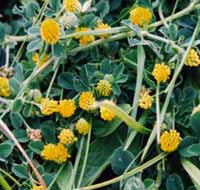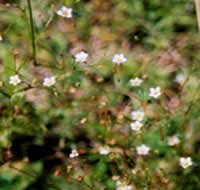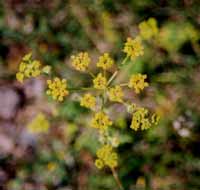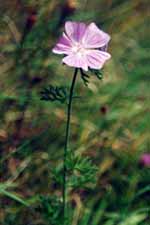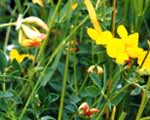![]()
Introduction
The fauna and flora of Bingham linear park is, to a great extent, the legacy from the time when the site was part of an active railway. The railway was closed during the 1960’s, at which time the edges of the track comprised a rich tapestry of grassland and flowers, in places dotted with a small amount of hawthorn bushes. Most of the plants and insects here became established before the days of modern agriculture, since when herbicides and insecticides have eliminated most species from the surrounding fields.
Following closure of the railway, there was a slow increase in the amount of hawthorn, and this increase has gained momentum in recent years. Some deliberate tree planting, together with the natural spread from the adjacent spinney has resulted in secondary woodland dominating the north-western end of the park. However, the original grassland in the rest of the Park is largely intact.
The walk starts at Nottingham Road and extends beyond the parish boundary to the River Smite. It ranges from a deep, enclosed cutting to high, windswept embankments and there is an amazing variety of wildlife in it. The development of the woodland has led to the gain of a number of species, but there have also been some losses. Few species may be seen along the entire length, and the progressive changes can be observed within sections delineated by the series of bridges along the park
Nottingham Road to Tithby Road bridge
This first, wooded, section begins with an embankment that changes to deep cutting before the Tithby Road Bridge.
Entering the park from the Nottingham Road entrance, an open upward slope at the start gives way to dense blackthorn that covers, and almost hides, the old station platforms. The white flowers, which appear before the leaves, are amongst the earliest to be seen in spring and by August and September the bushes yield an abundance of sloes. Some people enjoy the raw, bitter taste, whilst others may use the fruit to make sloe gin. Blackthorn along with hawthorn and, to a lesser extent, dog rose may be encountered throughout the length of the park. A high arching avenue of sycamore follows, and as the avenue opens out, on the right there is an ash tree and several guelder rose shrubs. Guelder rose is much used in roadside landscaping, and has creamy white heads of flowers in May and clusters of almost glowing, red berries in August and September when the green of the leaves is replaced by red and then a rich, purple colour. |
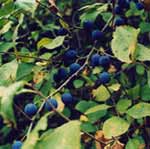 Sloes on a blackthorn bush. Photo: Bill Bacon |
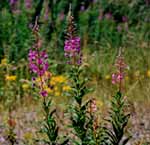 Rosebay willow herb Photo: Bill Bacon |
A silver birch tree on the left and a wych elm on the right precede a small clearing containing the once rare rosebay willow herb, which is being crowded out. There is also field maple on the left, and wych elm immediately prior to the Tithby Road Bridge. Many of the trees along this first stretch were planted some years ago, but the wych elm has taken hold probably from the adjacent spinney. In spring, the fruit is most clearly seen from the top of the bridge. Honesty and forget-me-not flowers occur in the more open parts. |
| The houses along either side of this first section of the park mean that many garden birds may be seen, including the familiar robin, blackbird, as well as the less common long-tailed tits which occasionally may be seen in small flocks. Tawny owls are more often heard than seen. Theirs is the familiar t’wit t’woo call, the first syllable given by a female, with a male answering with the second part. Song thrushes occur as does the bigger and rather less common, mistle thrush. Bullfinches can also be heard in the trees. Throughout the spring and summer common residents of the wooded sections are the speckled wood, holly blue and orange-tip butterflies. | 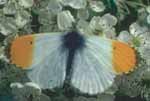 Orange-tip butterfly. Photo: Bill Bacon |
Tithby Road bridge to the A52 bypass tunnel
The cutting between these bridges progressively becomes less steep. It continues to be wooded, but less heavily and there are remnants of the original grassland to be seen on the left hand side.
Initially, there is much wych elm as well as ash and sycamore, then the grassland may be seen through the trees along the left edge of the old track bed.
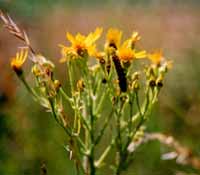 Ragwort with cinnabar moth caterpillar. Photo: Bill Bacon |
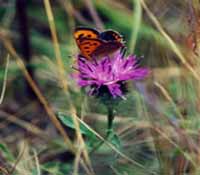 Small copper on black knapweed. Photo: Bill Bacon |
A large whitebeam tree is half way along on the right, with a number of hazel bushes on the left. The thorn scrub becomes dense on either side and this has almost eliminated the cowslips, which once were common along here. However, woodland species including wood avens, bluebells, dog violets and sweet violets, many of which display the white form of flower, have become established. Rabbit burrows may be seen on the left, until a small clearing opens immediately before the A52. A small oak tree is in the clearing and knapweed and ragwort give sustenance to summer butterflies. Sunny days throughout the spring and summer may reveal the soaring flight of the comma butterfly.
A52 tunnel to first farm bridge
Here, the cutting becomes increasingly shallow, and trees and shrubs become less dense and give way to grassland.
Beyond the A52 tunnel there is a bramble patch on the left and planted cherry trees on the right. The grassland begins to become more evident, first on the left where it is dotted with hawthorn with its beautifully scented may blossom in the spring. Here some of the may blossom is red. These are on bushes which are a form of Midland hawthorn where the fruit, or haws have two or three seeds instead of one. The first of two buddleia bushes on the left of the track bed provides late summer sustenance for a number of brightly coloured butterflies including the migratory painted ladies and red admirals. Clumps of hazel are growing on the track bed, and the grassy slope on the right is dotted with cowslips. |
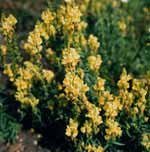 Common toadflax. Photo: Peter Allen |
Years ago, local fires were caused, either accidentally by a passing train, or deliberately by railway workers. These fires contributed to the rich mosaic of flowers amongst the grassland. A series of ‘scrapes’, where the surface has been removed to simulate those conditions has been made as part of the current management plan, and it is expected that annual and biennial flowers will take advantage. The first of these can be seen on the left just prior to the bridge. Benefits are already startlingly successful. Brown argus and small copper butterflies have been seen on and around the scrapes and it had been feared that both of these might have been lost to the park. The latter species has been seen in greater numbers than ever previously recorded. The food plant is sorrel, which is also now growing on the scrapes.
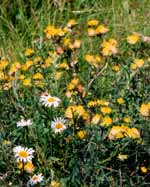 Kidney Vetch and ox-eye daisy. Photo: Bill Bacon |
The rare lesser toadflax has colonised in spectacular fashion this and other scrapes. It had been feared that this flower had been lost from the area. Heralding the spring, one of the earliest flowers to be seen is coltsfoot. In recent years, kidney vetch has been found growing on the track bed either side of the adjacent bridge. Although common on chalky soils, locally it is not known in the wild elsewhere within 10 miles of Bingham. |
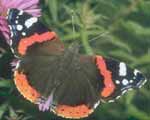 Red admiral. Photo: Bill Bacon |
First to second farm bridgesFrom the first of these two bridges, the cutting continues to become less deep, and has almost disappeared by the second. The clinker on the track bed allows plants to survive, which would be crowded out in richer soil, whilst the grassy slopes are species rich. The unusual yellow-juiced poppy occurs immediately beyond the bridge on the left. The familiar field poppies flourish on the scrapes and elsewhere where there is soil disturbance. The grassland, which dominates this stretch, supports good numbers of ox-eye daisies and field and common bindweed. This is the food plant of the nationally rare four-spotted moth. Other day-flying moths that may be seen occasionally include colourful five-spot burnet and the cinnabar, whose black and yellow caterpillars may be found on ragwort that occurs throughout much of the park. Flowers that are beginning to increase in numbers on the sparse soil of the track bed include common and mouse-ear hawkweed. From this area, to the end of the site lady’s bedstraw is commonly found. Various umbel flowers are to be seen including burnet saxifrage. The purple knapweed is a valuable source of nectar as well as adding colour throughout the summer. On the right, just before the bridge, there is an apple tree. One of many that has become established, presumably from discarded apple cores. |
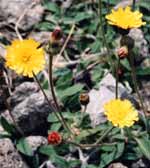 Mouse-ear hawkweed. Photo: Bill Bacon 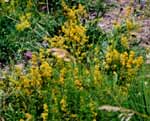 Lady’s bedstraw. Photo: Bill Bacon |
Second farm bridge to pylonsThe site narrows as the cutting gives way to a section on a level with the surrounding farmland, which in turn yields to the start of a long embankment. The fern, black spleenwort is growing on the brickwork of the bridge. Immediately after the bridge, on the right is a solid mass of blackthorn, whilst on the left there is a substantial bramble patch. This area provides cover for visiting warblers, whitethroats and lesser whitethroats. The bramble flowers provide food for brown butterflies including meadow browns, ringlets and gatekeepers. The caterpillars of these species feed on grass and may be seen along any sheltered, grassy part of the site. The third of the scrapes has been
made in this section, where common poppies are thriving.
St Johns wort and the once rare but now common rosebay
willow herb are in good numbers. Toadflax can be seen
in flower in late summer. |
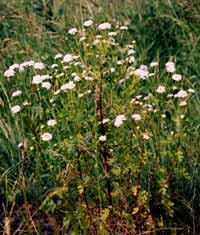 Feverfew. Photo: Bill Bacon |
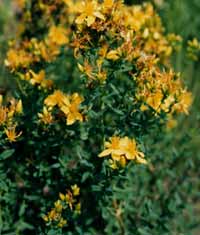 St John’s wort. Photo: Peter Allen |
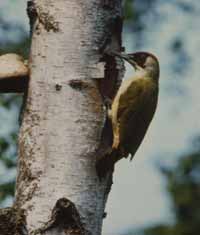 Green Woodpecker. Photo: Brayton Holt |
The cutting ends beyond an access gate on the left. On either side there is hawthorn and dog rose. A few yards beyond the gate, on the right there is a single example of purging buckthorn, a shrub which occurs locally mainly in hedges to the east side of Bingham. Buckthorn has clusters of white flowers in spring and black berries in late summer and autumn. It provides food for the brimstone butterflies, which are most often seen during May.
Green woodpeckers, which are seen more usually at the further end of the site, may visit the anthills that are found on the left. The disturbed soil allows feverfew, stonecrop and other annuals to gain a hold. Occasionally, greater spotted woodpeckers may be seen near the pylons.
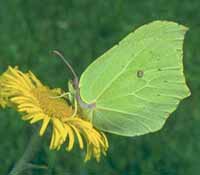 Brimstone butterfly. Photo: Bill Bacon |
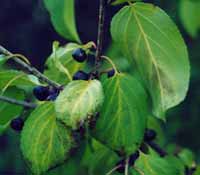 Purging buckthorn. Photo: Bill Bacon |
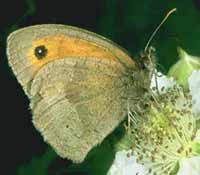 Meadow brown. Photo: Bill Bacon |
There are ash trees near the pylons and beneath them in May and June the flowers of the locally rare Smiths pepperwort can be seen. This is a member of the peppercress family, a cruciferous and thus related to cabbages. There are several other places on the embankment where this flower may now be found.
|
Pylons to ash groveThe embankment becomes high and windswept and takes us beyond the parish boundary. The grassland of the cooler, north bank has largely given way to scrub, whilst the south bank is mainly grass with clumps of blackthorn. On the left there is a single specimen of wild privet, which is distinct from the more familiar garden privet that originates in Japan. Skylarks, linnets and yellow hammers frequent the bushes all the year round The well-drained old track bed
continues to support knapweeds, hawkweeds, ox-eye daisies,
and centaury, which give a spectacular show in July.
The yellow flowering umbel, wild parsnip, can be seen
in good numbers in late summer. Ground hugging plants
include black medick and bird’s-foot trefoil,
where common blue butterflies may be found a large numbers
especially where there is some shelter from the blackthorn
and other shrubs. These species may be found on other
parts of the site, as can the small heath butterfly,
but they seem to fare best along here. Just beyond the
Parish boundary, on the embankment, a solitary, rare
musk mallow has flowered whilst along the embankment,
on both sides, horsetails are quite common. These are
survivors from a group of plants that evolved before
flowering plants. Fossils of them from 360 million years
ago are found in the Coal Measures. Some children know
horsetails as ‘Lego Plants’ as sections
of the stems can be pulled apart and then fitted together
again. The approach to the Ash Grove provides a good view of Belvoir Castle. Here fairy flax flowers in late summer. This plant is characteristic of open, less improved grassland, conditions that are scarce in Nottinghamshire. The Ash Grove supports a number of species that can also be seen in the wooded area at the beginning of the park
|
Ash grove to the River Smite
Work has been carried out to help keep the old track bed open from here up to the river. From the bridge over the Smite the old railway track is now almost impossible to walk.
Immediately beyond the Ash Grove, there
is a clearing, where in spring a patch of ground ivy produces
a mass of blue. Here also, and continuing up to the Smite,
there is an abundance of creeping cinquefoil, a member of
the rose family and closely related to wild strawberry. The
cinquefoil flowers throughout the summer and is the food plant
for one of our local rarities, the grizzled skipper. This
butterfly is of particular interest in that Bingham is now
virtually the furthest north it flies in the country. Both
the flower and the butterfly may be seen anywhere from the
end of the cutting to the River Smite, but the range of both
has reduced considerably in recent years.
Other butterflies, related to the grizzled skipper, but not
under threat, include large, Essex and small skippers.
A bridge over a farm track was removed some years ago, and recently installed steps have improved access to the final stretch of the park. The stinging nettles that grow in this area provide food for peacock and small tortoiseshell butterflies.
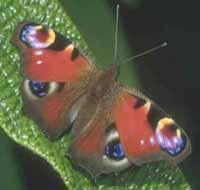 Peacock butterfly. Photo: Bill Bacon |
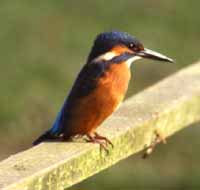 Kingfisher. Photo: Brayton Holt |
From the bridge over the Smite it is possible to see chub in the river below, and occasionally a kingfisher will fly under the arches of the bridge. The buzzing call of willow tits can be heard in the adjacent scrub. These birds are now scarce in Nottinghamshire.
A shortened version of this account can be downloaded and printed as an A4 leaflet to be taken on a walk along the Linear Park.
To do this you will need Adobe Acrobat Reader software. If it has not been installed on your computer you may obtain it free of charge from the Adobe web site by clicking here.There are two forms of the leaflet:
If you can print double sided automatically click:
LeafletIf you need to turn the page manually to achieve double sided print or can only print on one side, click:
Side one
Side twoTwo pages of pictures of flowers that are found in the Linear Park are also available for download. They have been set in three columns so that they can be folded in with the text leaflet.
Pictures

